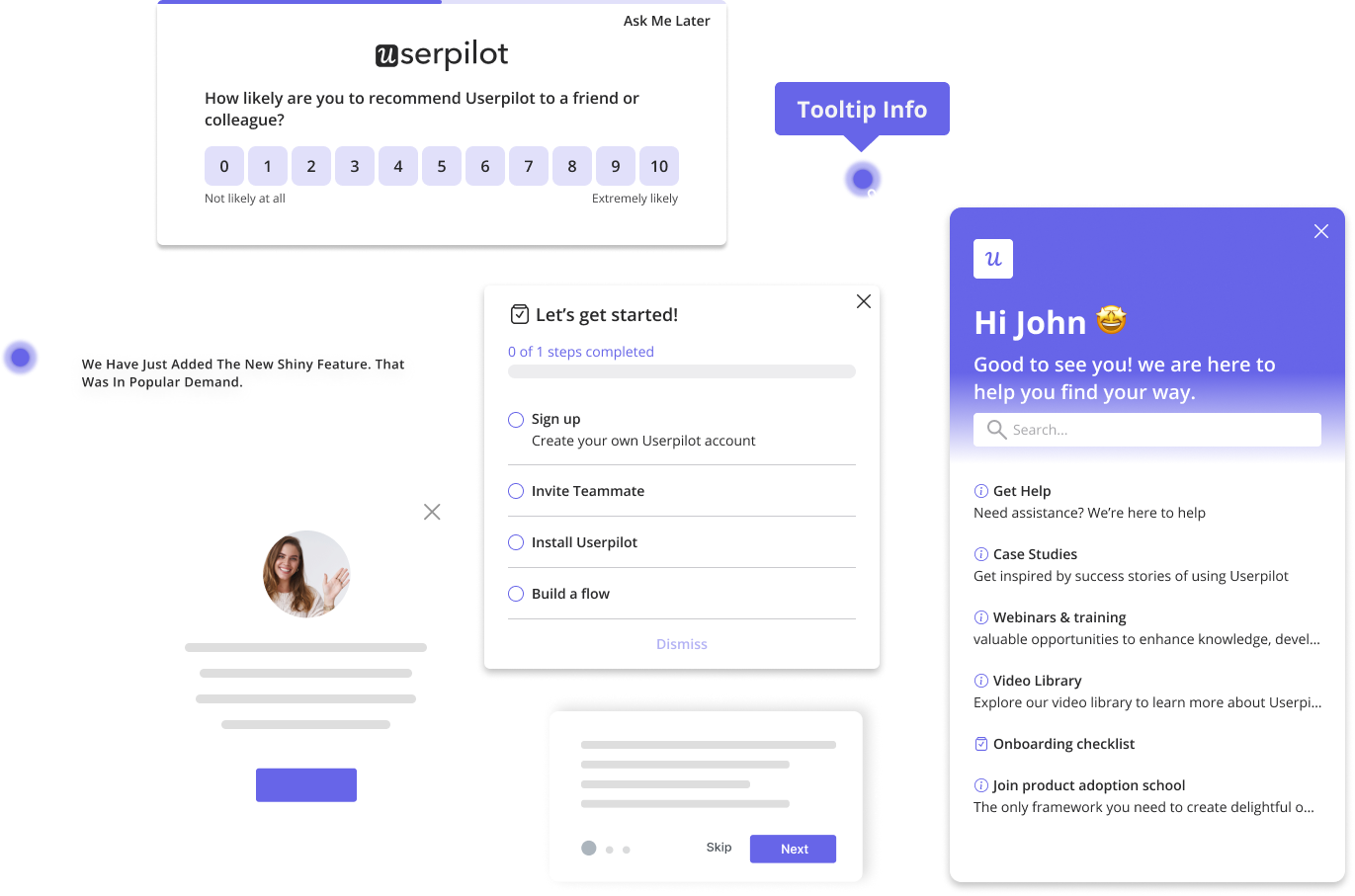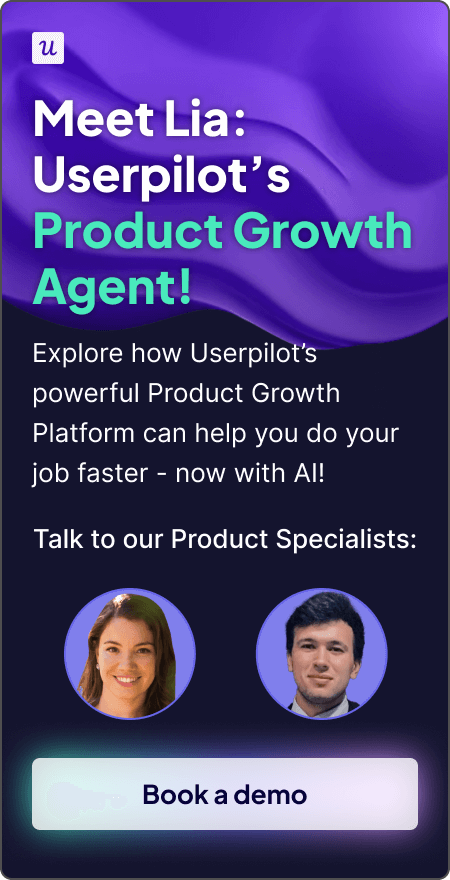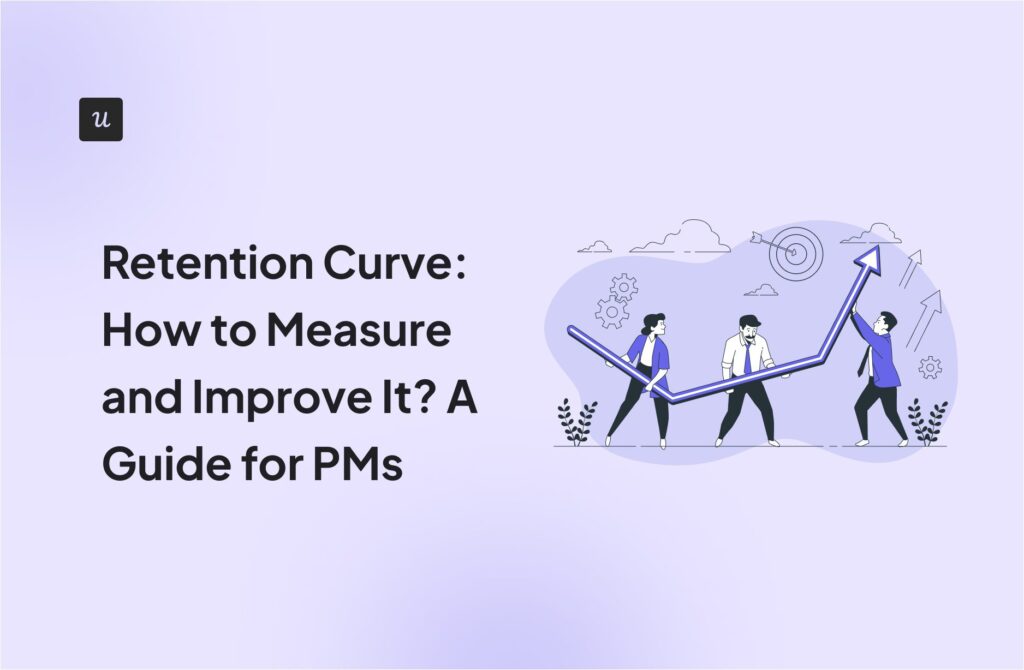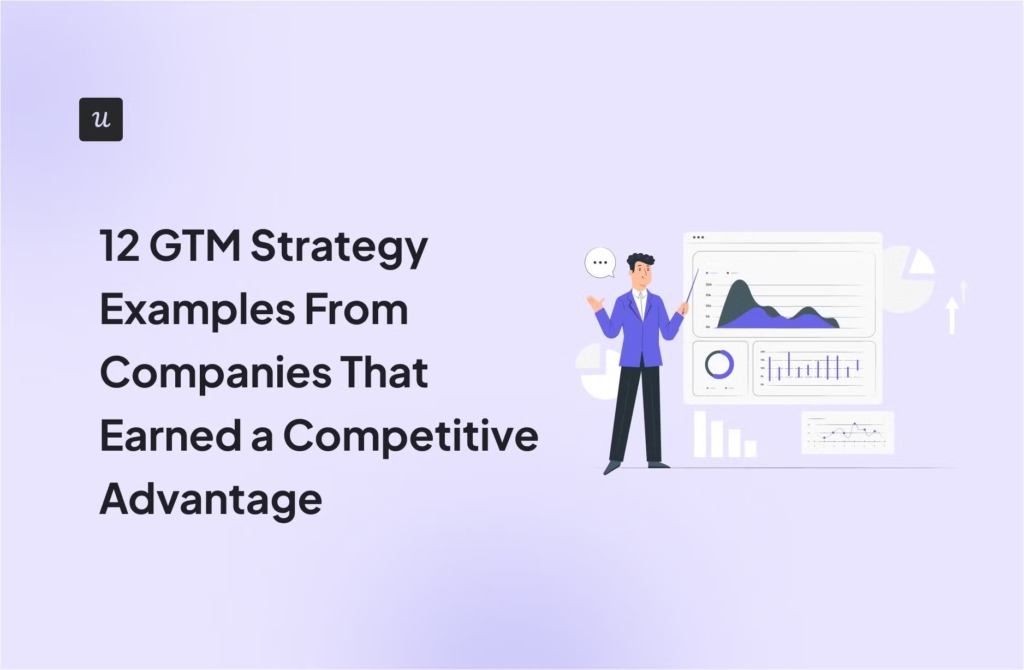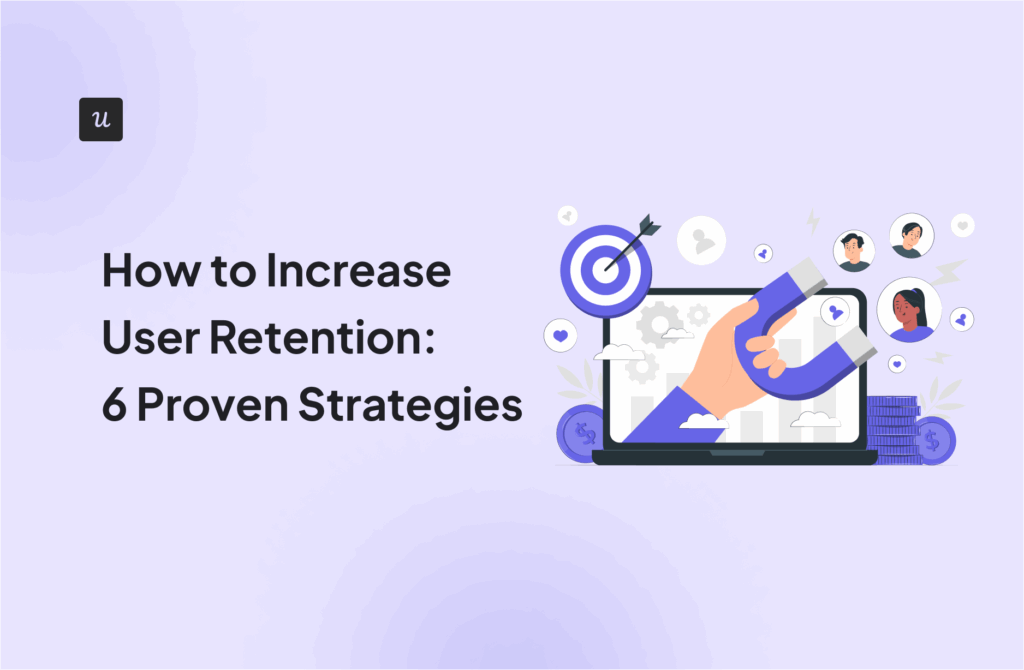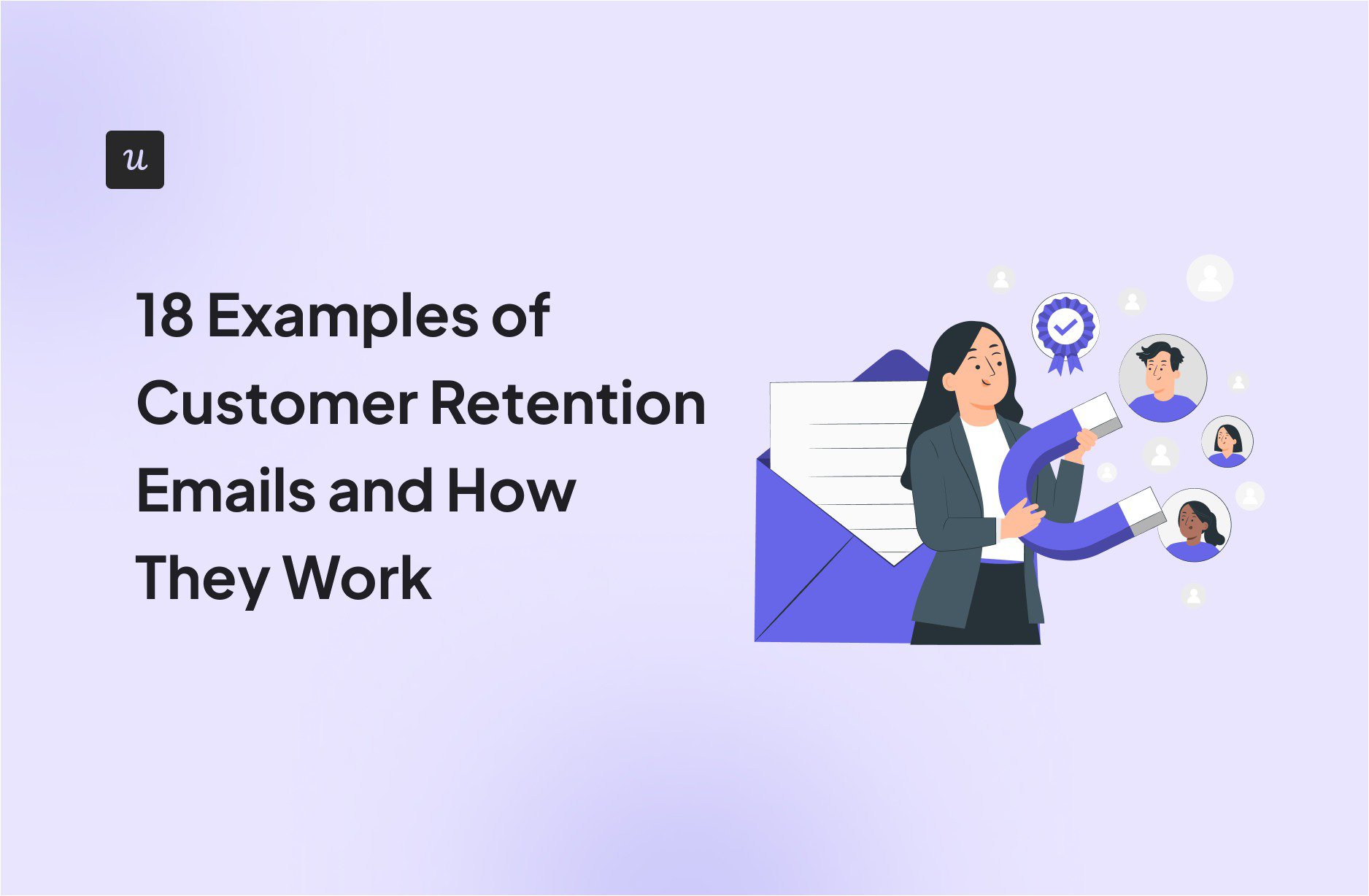
Most SaaS companies put serious muscle into customer acquisition. But after the user signs up? Silence.
I recently dug through inboxes from the 50+ tools we use across teams at Userpilot (PM, CS, Marketing, Growth). Almost none sent customer retention emails after onboarding, including a welcome email. There were no check-ins, no reminders, or any value nudges.
Which is wild because email marketing is still one of the most cost-effective channels for improving product engagement and is a powerful retention tool. According to the State of Email 2025 report, it delivers some of the highest ROI of any marketing channel, with leaders seeing $10–$50 returned for every $1 spent. But only if you use it for retention.
So in this post, I’m breaking down 18 customer retention email examples:
- 8 email types every SaaS team should bake into their lifecycle.
- 10 real examples from leading tools (with my take on what works and what doesn’t).
- A short playbook for sending smarter, more scalable customer retention email.
Try Userpilot Now
See Why 1,000+ Teams Choose Userpilot
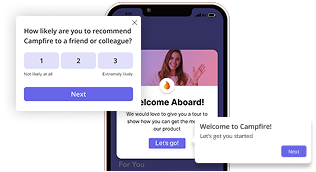
8 Types of customer retention emails to send
One retention email won’t save a disengaged user, but the right sequence can completely turn things around. The most effective customer retention strategy combines these 8 email types into behavioral sequences that respond to where users are in their product journey. Rather than sending random retention email campaigns, successful companies trigger these emails based on user actions, pain points, and engagement levels.
These 8 email types form the backbone of every retention email strategy that works:
| Email type | Trigger/Goal | Example content / CTA (Tone) |
|---|---|---|
| Re-engagement (“We Miss You”) | User inactive for days/weeks | Subject Line: “Is everything OK?” Body: Friendly check‑in asking if any obstacle is blocking usage (invite reply or link back) CTA: “Return to Dashboard.” (Warm, personal). |
| Trial expiration/conversion | Free trial ending soon or lapsed | Subject: “Your [Product] trial expires in 3 days.” Body: Reminder of benefits achieved, offer to extend trial or upgrade (often with a limited‑time discount) CTA: “Extend Trial” or “Upgrade Now.” (Urgent, helpful) |
| Subscription renewal | Paid subscription nearing expiration | Subject: “Your subscription is expiring” Body: Recap of value and new features, possibly offer loyalty discount CTA: “Renew Now” or “Keep Access.” (Reassuring, value‑focused) |
| Upsell/Cross-sell | User on basic/low-tier plan or usage limit hit | Subject: “Unlock Premium Perks” (Grammarly) Body: Highlight missing premium features and benefits (often with a deadline or special offer) CTA: “Upgrade Plan.” (Enticing, aspirational) |
| Loyalty/Rewards | Milestone or long-term user | Subject: “Thank you – here’s a gift” Body: Show appreciation (e.g. anniversary, loyalty program points) with exclusive perk or discount CTA: “Claim Reward.” (Appreciative, celebratory) |
| Cancellation prevention (win‑back) | User is cancelling or at risk | Subject: “Wait, we don’t want you to go” Body: Empathetic apology, ask for feedback, and offer to fix issues or give a last‑chance discount CTA: “Reactivate My Account.” (Empathetic, genuine) |
| Feature announcement | New feature release | Subject: “Just shipped: [FeatureName]” Body: Explain new feature benefits without pressuring (“Thought you’d like this…”) CTA: “Check it out.” (Informative, curious) |
| Engagement milestone | User hit a usage milestone (e.g. 1 month in) | Subject: “You’ve been with us 1 month 🎉” Body: Thank user for engagement, suggest next steps or advanced features CTA: “Explore More.” (Encouraging) |
What’s your biggest challenge with customer retention emails?
Understanding your main hurdle helps in crafting a better strategy for your customer retention emails.
How do you currently segment users for your customer retention emails?
Effective segmentation is key to sending relevant messages that resonate with your users.
How deeply do you personalize your retention emails?
Going beyond a first name can dramatically improve the impact of your communication.
Which metrics are you using to measure success?
Focusing on the right metrics is crucial for understanding the true performance of your customer retention emails.
Stop guessing and start improving your customer retention emails.
It looks like you’re facing common, but solvable, challenges. Userpilot can help you send behavior-driven, personalized messages to the right users at the right time—all without writing any code. See how you can improve user engagement and retention.
10 Customer retention email examples from SaaS companies
Before I sat down to write this, I went through dozens of emails from the 50+ SaaS tools my team uses. Most didn’t send anything past onboarding emails or welcome emails. A few tried and failed. Only a handful got it right and ended up with happy customers.
These are the customer retention email examples that work. Let’s break them down.
Account action reminder and trial extension offer from ProductFruits
This is a solid trial conversion and reactivation email combo. Two messages timed well: one when the trial ends, one after deactivation.
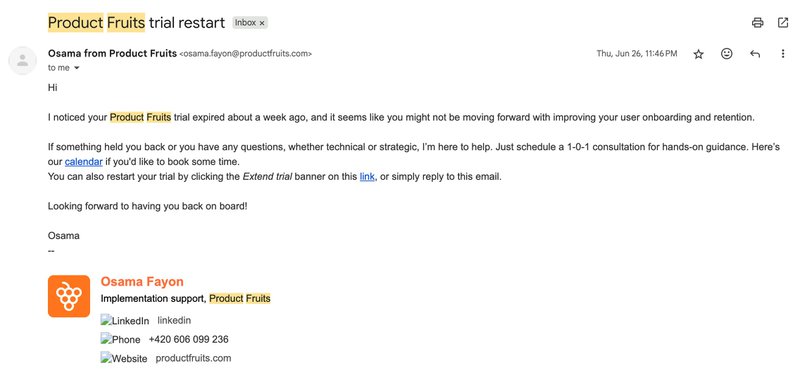
The customer retention approach works because ProductFruits doesn’t assume one reminder is enough. They follow up with a clearer second prompt, something most retention email campaigns skip. I like that they’re thinking sequences, not one-off customer retention emails.
The issue? The second email leans too heavily into pricing for someone who never activated. Better engagement would start with a value proposition.
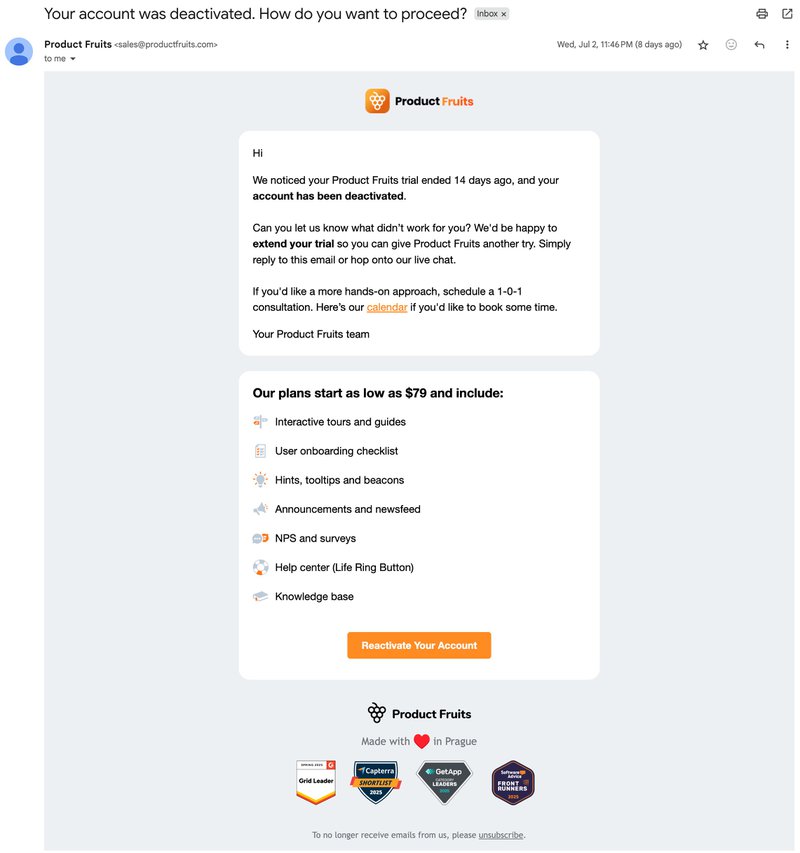
When to use this: Essential for short trials (7–14 days) where activation requires effort. This email marketing strategy gives the ideal customer time to ask for help before churning.
Re-engagement efforts from Appcues
This is a clear re-engagement email aimed at users who explored a feature (Workflows) but didn’t take the next step.
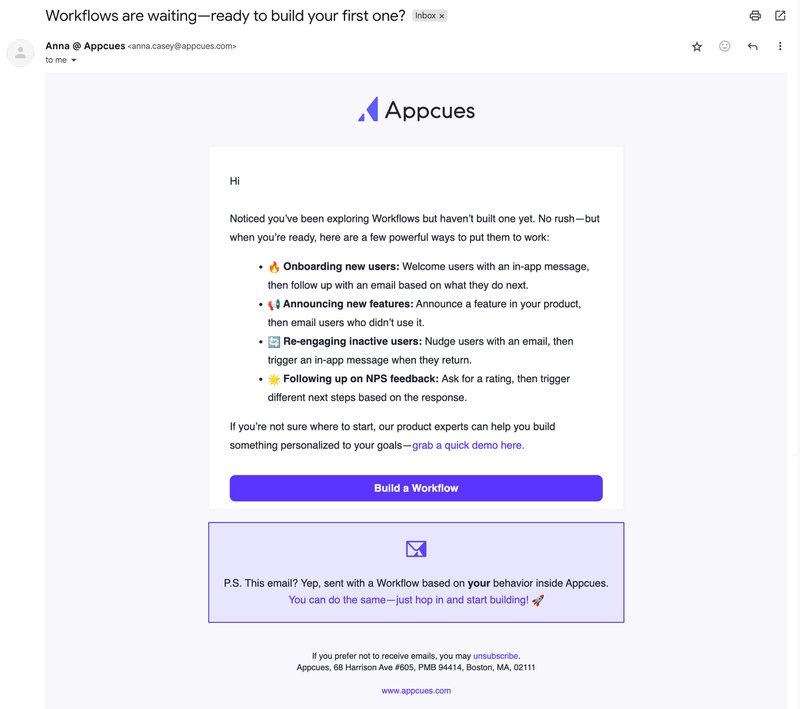
What I like: It doesn’t just nudge users back; it educates them on how that feature fits into their workflow. The personalized touch, saying their product powered this email, is smart social proof for their retention emails.
The issue? It tries to do too much in one message. If I were running this retention email strategy, I’d test breaking it into a short reminder followed by a use case-focused follow-up.
When to use this: This messaging works best when users are active but stuck browsing features, halfway through setup. Perfect for reminding new customers what they started without overwhelming them.
Account upgrade offer from Grammarly
This is a classic upsell sequence, and Grammarly leans hard into it. Multiple emails, back-to-back, all pushing a 50% off upgrade. It’s aggressive, and it works if you’ve already built trust with new customers.

From a customer retention standpoint, this email marketing strategy is risky. The social proof and customer testimonials are solid, but the subject line frequency borders on spammy. This might convert price-sensitive users, but it burns out casual ones who aren’t loyal customers yet.
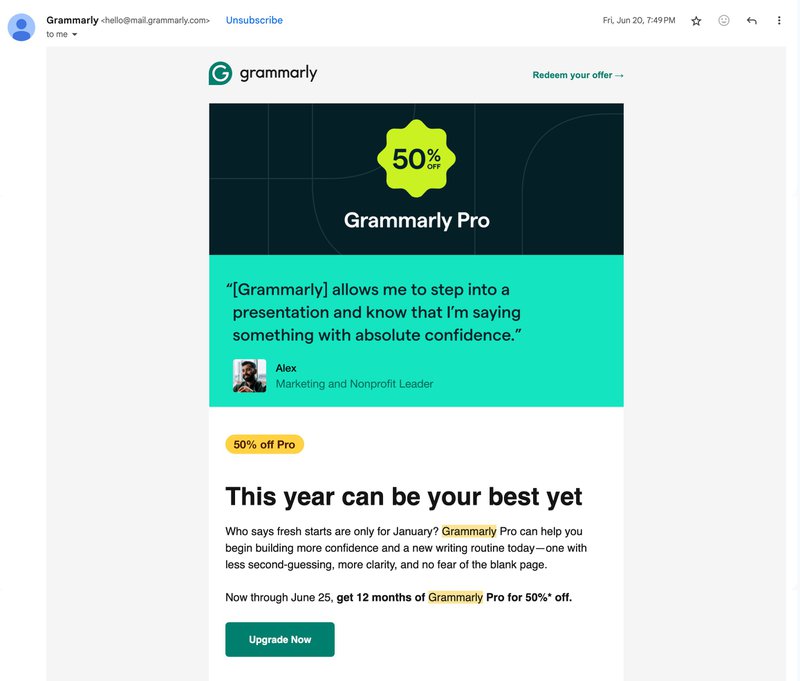
What’s missing? Timing. You’d get better engagement segmenting users by feature usage first, then sending the upgrade nudge after they’ve hit key milestones to encourage future purchases.
When to use this: Retention email campaigns like this work best for users who already see value but haven’t paid yet. Time it around usage spikes for urgency and context.
Limited and exclusive discounts from Slack
This limited-time upsell email is a lot more measured than Grammarly’s approach.
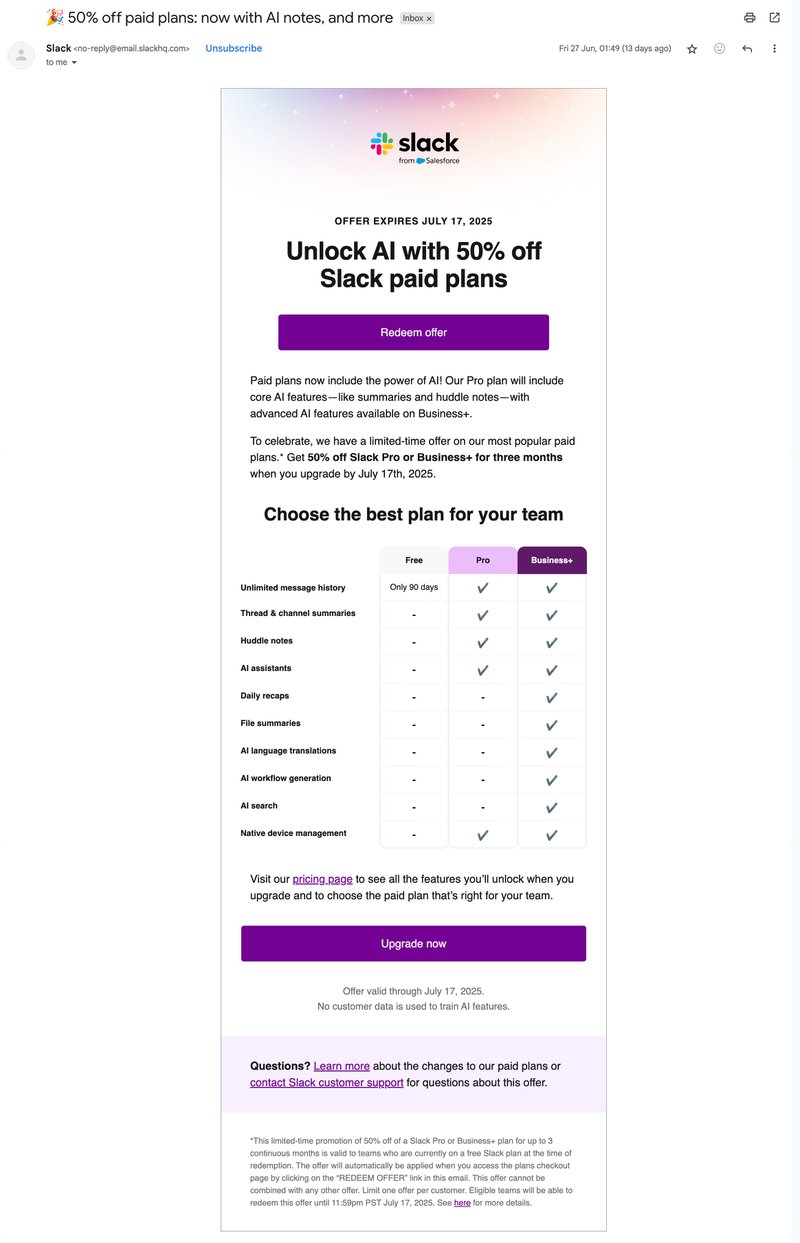
Slack combines deadline urgency (July 17) with new AI features, making the offer feel timely and relevant. It’s not pushing you five times in a row; rather showing you what’s new, what you’ll unlock, and what it costs.
This retention marketing works because it adds net new value (AI features) while reminding current customers what they’re missing, helping to build lasting customer relationships. Especially effective when rolling out new functionality that justifies an upgrade.
These customer retention emails work best when sent to engaged teams already hitting usage limits, file caps, and chat history restrictions. Send to inactive users, and it gets ignored.
When to use this: Perfect for feature-driven upsells tied to product launches. Combine with strong product usage signals (hitting plan limits) to trigger personalized messaging at the right moment.
Win back effort from Intercom
This is a textbook cancellation prevention/win-back email, sent right after a trial ends. It gives users a second chance and pairs it with strong social proof and a clear upgrade path.
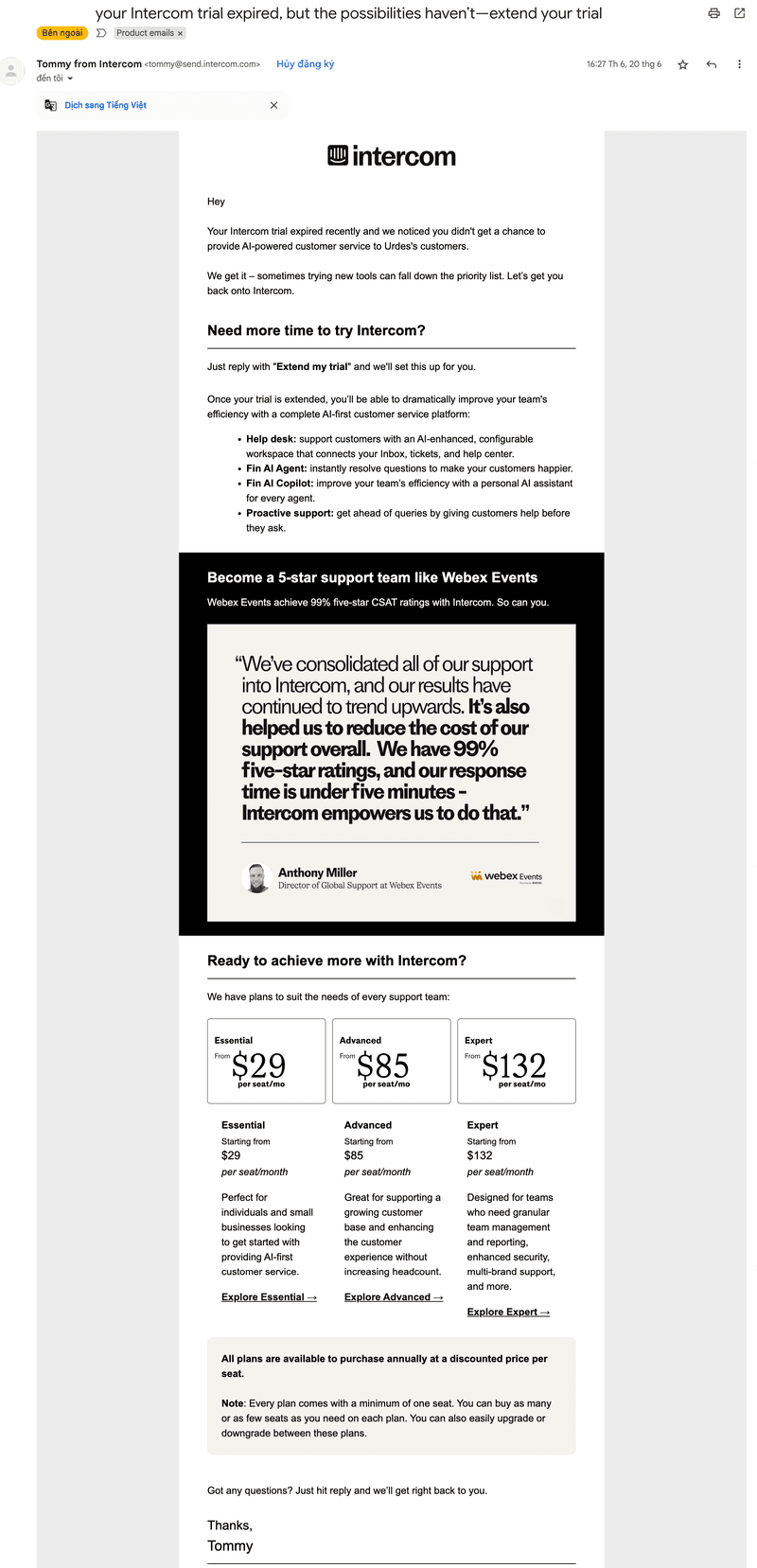
What stands out: This isn’t just a “we miss you” message. It reminds users what Intercom can do, shows how another company is winning with it, and lowers the barrier with a trial extension. Smart retention email strategy for a product that takes time to integrate.
The design could be tighter, and the call to action is buried mid-paragraph. But from a customer retention strategy perspective, this email marketing approach works.
When to use this: Ideal when your time-to-value is longer than your trial. Instead of assuming users made a decision, ask: “Did they even have time to experience value?” That’s where trial extensions in your customer retention emails can save real revenue.
Account expansion nudge from ActiveCampaign
This mid-funnel expansion email nudges Pro plan users toward Enterprise by showcasing what they’re missing: custom objects, deeper reporting, SSO, etc.
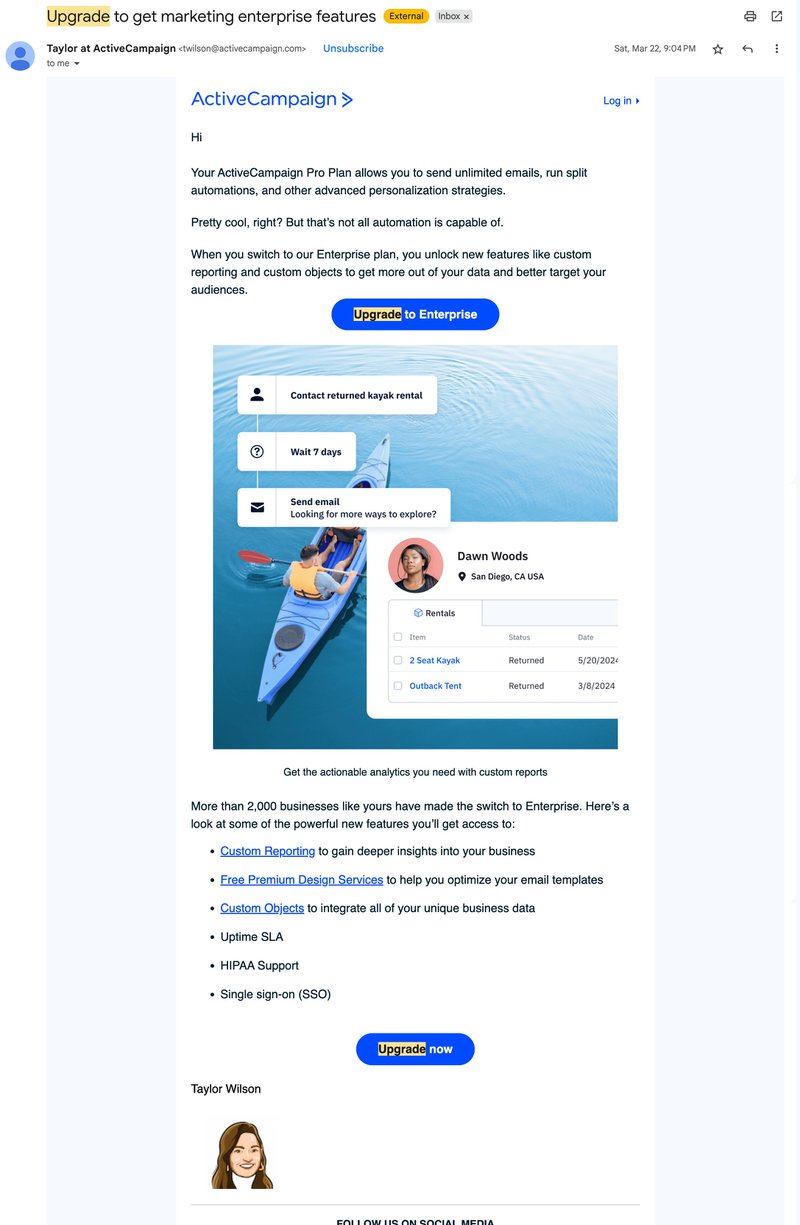
I like that it’s feature-led without being pushy. It illustrates use cases (like custom reporting) and makes the upgrade feel like a logical next step, not just a bigger bill.
The catch? It assumes the recipient is already running advanced automations. If they’re not, this email marketing approach creates a poor customer experience. I’d trigger this only when someone hits limits or uses features that signal Enterprise readiness.
When to use this: Perfect for account expansion when customers show advanced usage: custom workflows, multiple teams, outgrowing templates. Don’t blanket-send these customer retention emails to your entire target audience on Pro.
Mixpanel’s alpha invitation to re-engage customers
This is a smart re-engagement email, but with a twist. Instead of a generic nudge, Mixpanel invites inactive signups to join an alpha program for a major new feature (autocapture). It’s personal, time-sensitive, and framed as an insider opportunity.
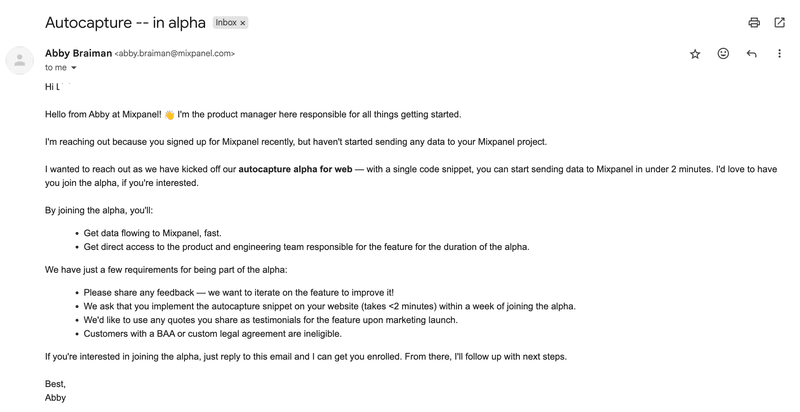
What makes it effective: It shifts the ask. Rather than pushing customers to “come back,” it gives them a reason: early access to something valuable, with white-glove support included. That’s compelling, especially if you’ve bounced off setup complexity before.
This email marketing play works great for B2B tools with long setup times. If you’re launching a new capability, invite those who stalled out earlier.
When to use this: Re-engage trial users who didn’t activate by offering exclusive access to new features through these customer retention emails. The scarcity (alpha access) adds urgency without pressure for better customer engagement.
Demo follow-up from Zendesk
This is a classic post-demo retention email that’s often underused or phoned in. Zendesk keeps it clean and low-pressure: here’s a link to book time, a self-serve option, and a fallback to the free trial.
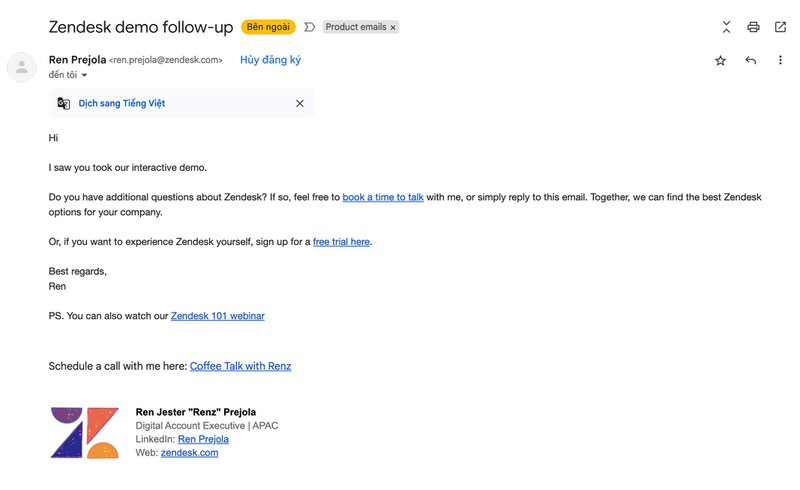
What I appreciate is the multi-path follow-up. Whether you want sales-led support, want to try the product yourself, or are still browsing, you get action without friction.
The timing matters for these customer retention emails. They only work if they land within 24–48 hours of the demo. Any later and your momentum’s gone.
When to use this: Always send a follow-up within 1–2 days of a demo. Bonus points if it’s tied to previous interactions and what the user showed initial interest in during the session. Think of it as continuing the conversation, not just following up.
Usage limit alert from ScrapingBee
This usage-based retention email fires when a user hits their API credit limit. It’s direct and includes two upgrade paths.
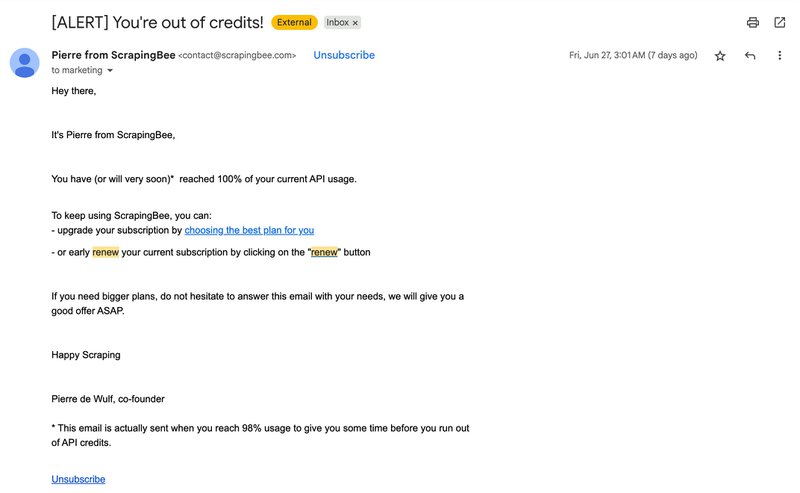
I like that it’s founder-signed, adding a human touch. But the bigger win is timing. Sending this before the user hits the pain point means you’re intervening before frustration kicks in. That’s the customer retention sweet spot.
This alert turns a potential blocker into a conversion opportunity for existing customers, without waiting for support tickets or churn signals.
When to use this: Any time a user hits 80–90% of quota: API calls, seats, data limits, or tracked users. Tie these customer retention emails to upgrade call to actions and offer to talk. That dual path enhances positive customer experience and reduces churn.
Trial survey to collect early customer feedback from UserGuiding
This valuable feedback email targets trial users who haven’t activated. The intent is right. Figure out what’s blocking users and offer help early. But the execution falls short.
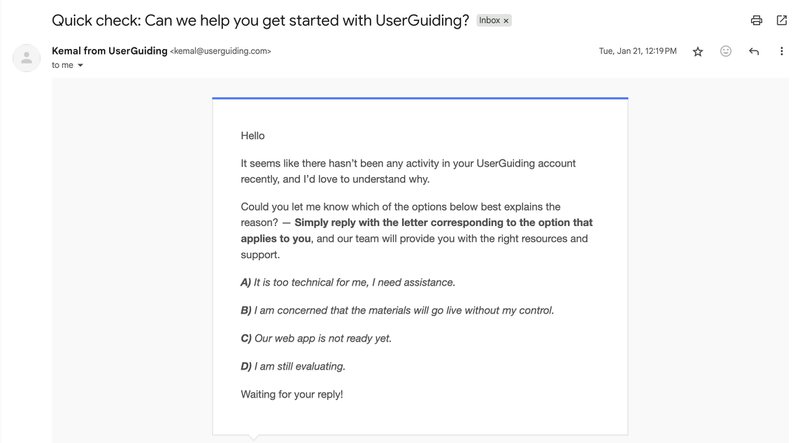
The biggest issue? It’s not actionable. None of the response options is clickable. Users have to hit reply and copy/paste. That’s a huge drop-off risk for engagement.
I appreciate the need-based segmentation. They’re trying to understand specific blockers like technical barriers or internal delays. That kind of customer data provides valuable insights to retain customers.
When to use this: Great for days 3–5 of a trial when there’s no activity. But make these customer retention emails frictionless: buttons, embedded forms, or one-click replies for better email marketing results.
How should you send your retention emails?
When I was scaling retention at previous companies, email-first strategies never scaled. At least, not in SaaS.
I’ve watched CS and growth teams get stuck duct-taping workflows across disconnected tools: product analytics for usage data, ESPs for lifecycle emails, CS platforms for scaled playbooks. I’ve seen teams export one CSV, sync another tool, and write a copy a week too late. By the time they hit send, the user’s already churned.
That lag doesn’t cut it when you’re supporting multiple personas, usage-based pricing, and self-serve onboarding. You need to act on real-time behavioral triggers.
That’s why we built Userpilot around the customer lifecycle segmentation:
- You track real-time product usage data across web and mobile, down to feature-level interactions.
- You turn that behavior data into personalized messaging across email, in-app engagement, or mobile push.
- Also, you do it from a single platform, without chasing product or data teams.
The most effective retention marketing strategies are built right on top of your product, where customer engagement happens.
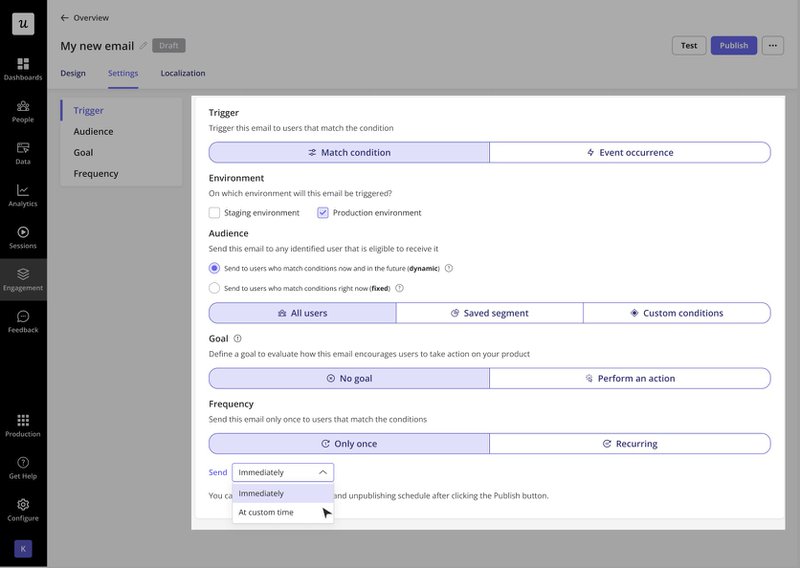
Supercharge your retention marketing efforts with Userpilot!
Customer retention requires more than emails alone.
Your retention strategy needs to be in the product, in the inbox, and in the moment.
Userpilot tracks user behavior across web and mobile platforms and triggers automated messages through multiple channels: in-app notifications, mobile push, and retention email campaigns based on real-time user actions. The platform enables teams to create behavioral triggers and automated flows without requiring technical implementation.
Book a demo to explore Userpilot’s behavioral triggers and multi-channel messaging features.
FAQ
How to retain a customer via email?
You retain a customer via email by sending behavior-based messages that guide them through their journey, not just react to customer churn. This means combining re-engagement nudges, upgrade prompts, milestone celebrations, and customer feedback requests into a unified retention email strategy. When timed right and powered by real-time product data, these emails can reduce churn and improve customer satisfaction consistently.
What is an example of customer retention?
A great example of a customer retention email is a re-engagement message sent after 10 days of inactivity:
Subject line: “Is everything OK?”
Body: A friendly check-in offering help or next steps.
CTA: “Return to your dashboard.”
These types of personalized messages reflect your brand’s personality, feel human and helpful (not automated), and are key to keeping existing customers engaged.
What is the retention rate of email customers?
Retention rates for email can vary, but top-performing SaaS companies often see 5–10% higher retention among users who receive targeted lifecycle emails. According to the State of Email 2025 report, 30% of marketers get a $36–$50 return per $1 spent on email, proof that email is still a cost-effective way to drive customer loyalty and repeat purchases.
What are the 8 C's of customer retention?
The 8 C’s of customer retention offer a framework for building trust and long-term relationships:
Customer-first: Prioritize their needs.
Convenience: Remove friction in the journey.
Communication: Stay proactive and helpful.
Consistency: Keep messaging, brand voice, and experience aligned.
Customization: Personalize based on behavior and preferences.
Credibility: Build trust with transparency and proof.
Care: Show you value their time and feedback.
Community: Create space for engagement beyond product use.
Using these principles in your retention email campaigns leads to a stronger emotional connection and lower churn.

